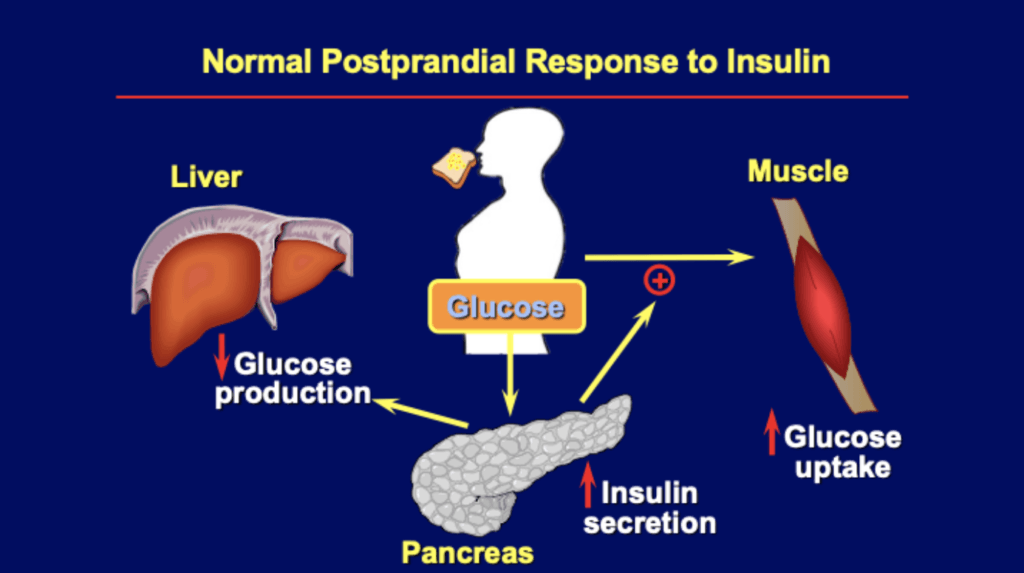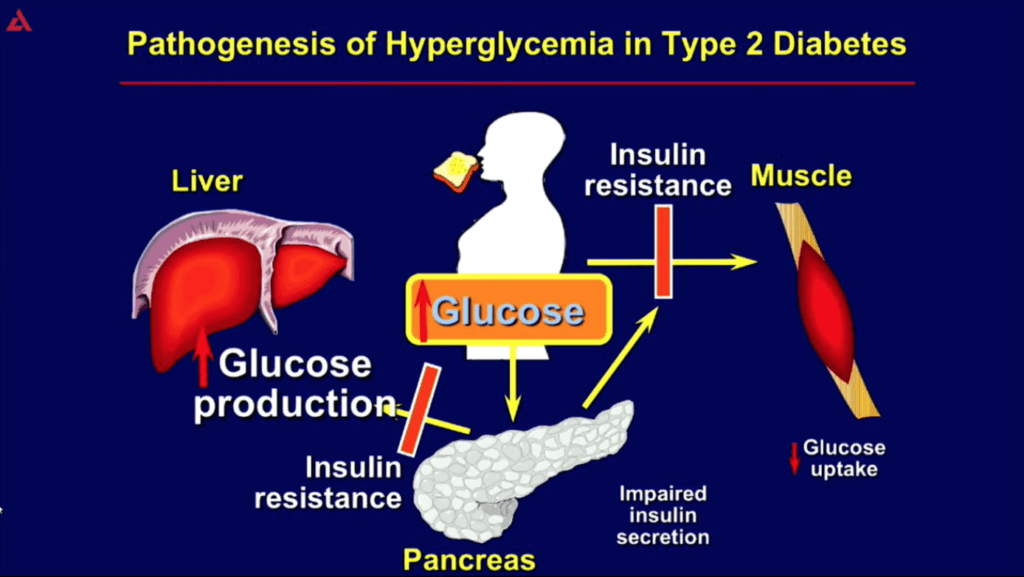This audio clip is from “Ask Me Anything” (AMA) episode # 20 — Simplifying the complexities of insulin resistance: how it’s measured, how it manifests in the muscle and liver, and what we can do about it.
If you’re a member, you can now listen to this full episode on your private RSS feed or on our website. If you are not a member, learn more about the how to become a member and the benefits here.

Show Notes
How insulin resistance manifests in the muscle
Normal metabolism:
- You eat some carbs and plasma glucose increases
- The increase in plasma glucose stimulates insulin secretion
- And insulin secretion:
- stimulates glucose uptake in muscle
- Suppresses GNG by the liver
- In a healthy individual, 80-90% of consumed glucose is stored as glycogen (in muscle and liver)
- The muscle is the predominant place where we dispose of glucose
- When Peter says “glucose disposal” he’s referring to muscle taking in glucose

Figure 5.
What goes wrong from here?
- It’s important to understand this is a continuum — on one end of the spectrum is just becoming insulin resistant and at the other end of the spectrum is full-blown type 2 diabetes
- The first thing that really goes wrong is the muscles take in less glucose, and by extension, the plasma insulin level has to rise to force that in
- The first sign of this is normal levels of glucose going in but at a higher level of insulin (and that’s easy to miss)
- The first thing that usually shows up is higher levels of plasma glucose — and that’s because the liver is becoming resistant to insulin
- The liver being resistant to insulin means it’s not slowing down glucose production, and therefore in the presence of glucose it’s still making glucose (very problematic)
- At some point there’s not even enough insulin that the pancreas can make to overcome the resistance resulting in a person needing medication to start to overcome this problem

Figure 6.
What is it about the muscle that fails in this process of glucose disposal?
Three fates of glucose within the muscle
- Oxidative
- Glycolytic
- Glycogen
1-The oxidative fate of glucose says glucose comes into a muscle and immediately gets converted into ATP through the very efficient pathway
- Glucose gets converted to pyruvate, pyruvate gets converted to acetyl CoA, and that going into the mitochondria where ATP is generated under something called oxidative phosphorylation (Krebs cycle — this is the most efficient way to generate ATP out of glucose)
2-The second potential fate of glucose is to undergo glycolysis
- Take the glucose down to pyruvate
- But instead of taking the pyruvate towards the mitochondria and going through the Krebs cycle you turn it into lactate, which yields much less ATP
3-The third fate of glucose in the muscle is it can be stored as glycogen
- Glycogen is literally a lattice of glucose.
- Glucose is a single six carbon ring, but you can join these things in rows, and rows, and rows, and rows, and sheets, and sheets, and sheets covalently and that becomes a matrix of glucose, which is a very efficient way to store it
When things go wrong…
- When things go wrong, we know that at least one of those three are not working
- The question becomes, which one?
Gerald Shulman did a study using a technique called NMR to try to answer this question.



